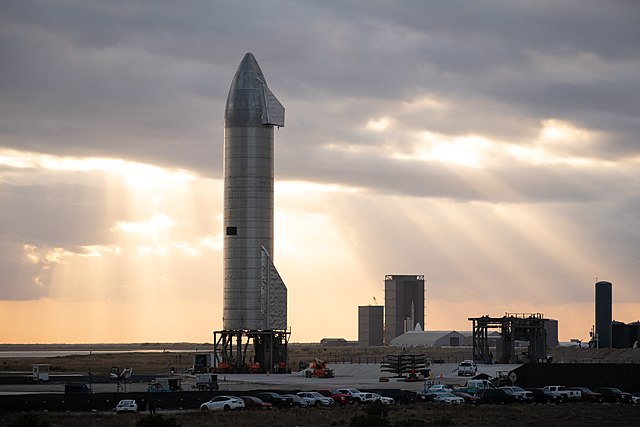
The attempt to launch the biggest rocket ever built, called Starship, into space has been delayed for at least 48 hours. This massive rocket was created by the American company SpaceX, owned by entrepreneur Elon Musk.
On Monday, just a few minutes before the planned launch from Boca Chica, Texas, the mission had to be called off due to a problem caused by a frozen “pressurant valve.” However, there is a possibility that SpaceX will try to launch the rocket later this week.
Elon Musk’s Realistic Take On the Launch
Starship is almost 120m (400ft) tall and has a thrust power that is almost double that of any other rocket ever built. The goal of this uncrewed mission is to send the upper stage of the rocket eastward to complete almost one circuit of the globe.
Thousands of people gathered along the Gulf of Mexico’s coast to watch the launch of the Starship rocket. Before the launch was postponed, Elon Musk had appealed to everyone to lower their expectations. He explained that it’s normal for rockets to experience some failure on their initial launch.
“It’s the first launch of a very complicated, gigantic rocket, so it might not launch. We’re going to be very careful, and if we see anything that gives us concern, we will postpone the launch,” he had said during a Twitter Spaces event.
Expected Thrust of the Starship Rocket
The upper portion of the Starship has been tested on shorter test flights, but this launch was intended to be the first time it would go up with its lower stage.
The lower stage of the rocket, called Super Heavy, was fired in February while clamped to its launch mount. However, during that test, the engines were throttled back to half their capacity.
With a test such as this, success is measured by how much we can learn, which will inform and improve the probability of success in the future as SpaceX rapidly advances development of Starship pic.twitter.com/2tf4jx3qRL
— SpaceX (@SpaceX) April 17, 2023
If everything goes according to plan for the next launch attempt this week, SpaceX will aim for 90% thrust, allowing the stage to deliver almost 70 meganewtons of force. This is comparable to the thrust required to launch roughly 100 Concorde supersonic aircraft.
Plan for the Launch and Subsequent Return
Assuming the launch is successful, Starship will rise up and travel across the Gulf, with the 33 engines on the bottom of the booster burning for two minutes and 49 seconds.
After this point, the two sections of the rocket will separate, and the top section called the ship will use its own engines for an additional six minutes and 23 seconds.
By this time, it should be traveling over the Caribbean Sea and cruising through space more than 100km (62 miles) above the Earth’s surface.
SpaceX intends to attempt to land the Super Heavy rocket vertically just above the Gulf of Mexico close to the Texas coast. Afterward, it will be left to sink and collapse over.
After nearly completing one rotation of the Earth, the ship will re-enter the atmosphere and land in the Pacific Ocean to the north of the Hawaiian Islands. To handle the intense heat it will encounter throughout its descent, it has been fitted with protective tiles.
The ship is scheduled to make a bellyflop into the ocean 90 minutes after lift-off.
SpaceX’s Long-Term Goals for Reusable Rockets
SpaceX plans to eventually make both the booster and the ship reusable, allowing them to be refueled and relaunched. The company has been testing different methods of constructing steel vehicles at Boca Chica, where several models are waiting for their turn to take off.
NASA is one of the most interested parties in the project and has given SpaceX nearly $3bn to develop a version of Starship that can transport astronauts to the Moon.
Garrett Reisman, an advisor to SpaceX and professor of astronautical engineering at the University of Southern California, believes Elon Musk has even bigger ambitions for Starship. He envisions the spacecraft as a paradigm shift in space travel, greatly increasing our capability to bring people to Mars and beyond.
However, Reisman warns that this is an incredibly difficult task and no one has ever built a rocket as large as Starship before. The project is twice as big as the next largest rocket ever built, making it both incredibly promising and potentially risky.
See all the latest news from Greece and the world at Greekreporter.com. Contact our newsroom to report an update or send your story, photos and videos. Follow GR on Google News and subscribe here to our daily email!



